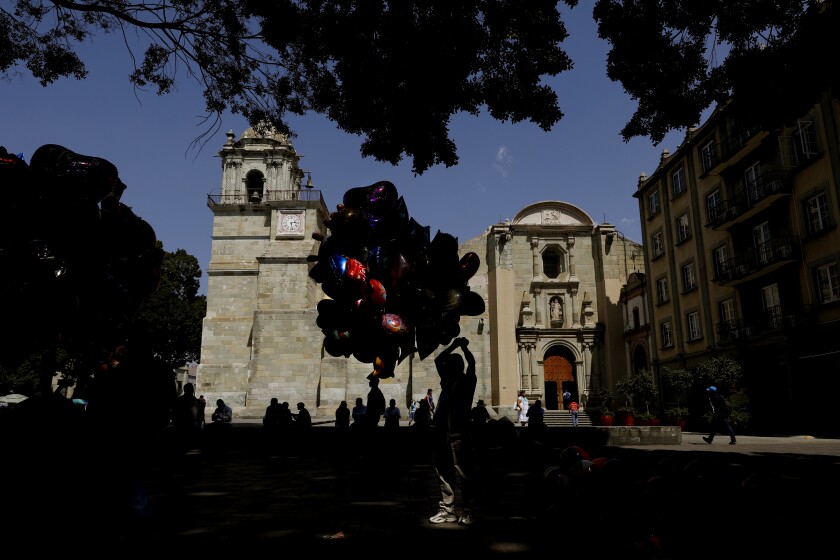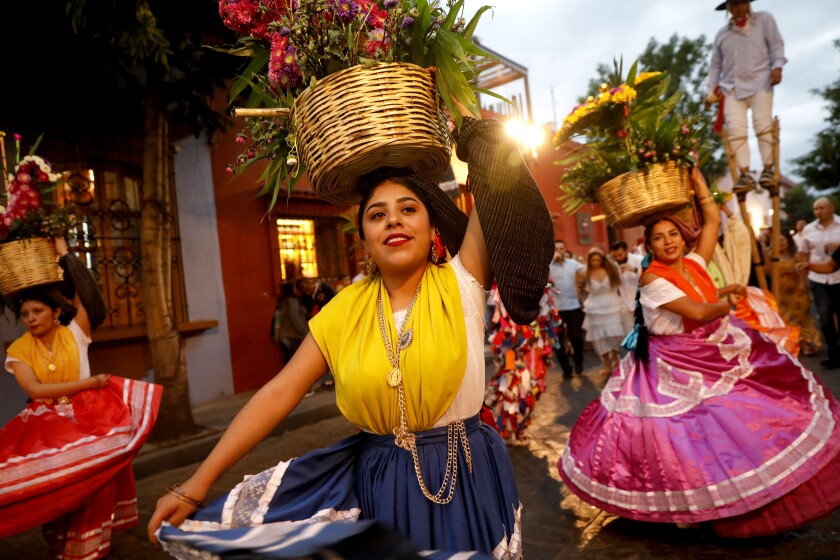OAXACA, Oax. Mexico.- Sometimes we travel with a sense of urgency because over time something inside us has gone dim.
L.A Times (FEB. 21, 2020).- Years ago, that’s what drew me to Oaxaca.
I lived alone in Oregon, a misty place where it was so rare to find anyone who looked like me I once chased down a stranger in the grocery store produce section and asked him to lunch because I heard him pronounce “mango” with a Spanish accent.
Starved for color, I booked a flight to this city in southwestern Mexico that I’d heard so much about. I had no way of knowing then just how much Oaxaca would wrap itself around my life for years to come, starting with the first phone call.

A friend suggested Las Bugambilias (lasbugambilias.com), a quaint bed-and-breakfast near the center of town, so I called to make a reservation. The woman on the phone said she was booked solid.
“This time of year,” she told me, “you won’t find a place anywhere else.”
It was July, after all, a week before La Guelaguetza, Oaxaca’s biggest fiesta. Stumped, I was about to hang up, but then the woman on the other end of the line made me an offer unheard of in those pre-Airbnb days:
“If you want, you can stay at my house,” she said. “My family will be in Texas. You’ll have the place to yourself.”
Weeks later, I met Aurora. She was gracious and easygoing. She handed me the keys to her two-story house tucked behind a courtyard. For $20 a night, I spent the week sleeping on her son’s twin bed chaperoned by his small army of stuffed animals.
The first full day I awoke without plans — no map of the city, no travel guide, no list of top restaurants. I wanted to get to know Oaxaca bit by bit, to let Oaxacans show me their city.

When I found my way to Calle Macedonio Alcalá, the main strip, I was mesmerized by the scene: Dozens of Oaxacans in their Sunday best clothing filled the plaza outside Santo Domingo Church. Fathers held hands with their daughters. Boys gathered on the pavement for an intense game of marbles. Women dressed in traditional indigenous huipiles and colorful wraparound skirts sat in the shade selling rebozos (shawls) and sombreros.
Suddenly, there was a blast of fireworks. Then, booming live music. Trumpets, trombones, saxophones.
Everyone looked up as a 12-piece brass band marched down the cobblestone street. Behind the musicians came two dozen dancers in jewel-tone gowns, each balancing a basket of roses on their head. Behind them, two 10-foot-tall papier-mâché puppets carefully maneuvered far above the heads of two ruddy-faced boys.
This must be a major holiday, I thought. Maybe a tribute to Oaxaca’s most revered saint. I ran up to a trombone player and asked what they were celebrating.
“A little boy’s birthday,” he said. His name was Carlitos, and he had just turned 3.

I soon learned these elaborate parades, known as calendas, date back centuries. They happen almost daily in Oaxaca. It’s how locals celebrate just about every milestone: baptisms, weddings, funerals, divorces, pregnancies, home purchases, store openings.
In Mexico, the state of Oaxaca is the king of fiestas. Year-round, its nearly 600 towns elect mayordomos (fiesta mayors) to host local parties for their patron saint. Many towns also compete annually in the state’s most exclusive event: La Guelaguetza. Thousands of people flood the capital those two weeks to see the region’s finest musicians and dancers.
I missed the big show by a couple of days, but there was so much to see that week that I stuck close to the city center. I floated from old churches to shops, museums, cafes and bookstores. I drank lots of fresh-squeezed jugo verde and got by on street food: $3 enfrijoladas, tortillas drenched in a creamy bean purée,and $4 tlayudas, pizza-sized tortillas topped with beans, quesillo, avocado and salsa.
Every day, I walked to Nieves Oaxaqueñas Chagüita, an ice cream stall inside Mercado Benito Juárez, where I diligently tried to tackle the menu of nearly 40 homemade flavors: tequila, cajeta, arroz con leche, passion fruit, leche quemada (burnt milk) and mamey (a sweet, creamy tropical fruit).
Sundowns I spent in the zócalo, the bustling heart of the city, where every night magicians put on shows, comedians told jokes and kids ran around tossing giant balloons toward the sky.
CLICK HERE for original article on the L.A Times
The Mazatlan Post





